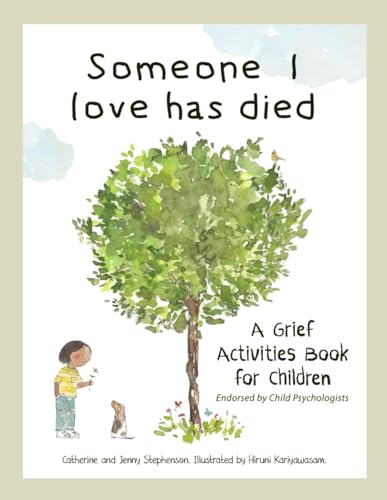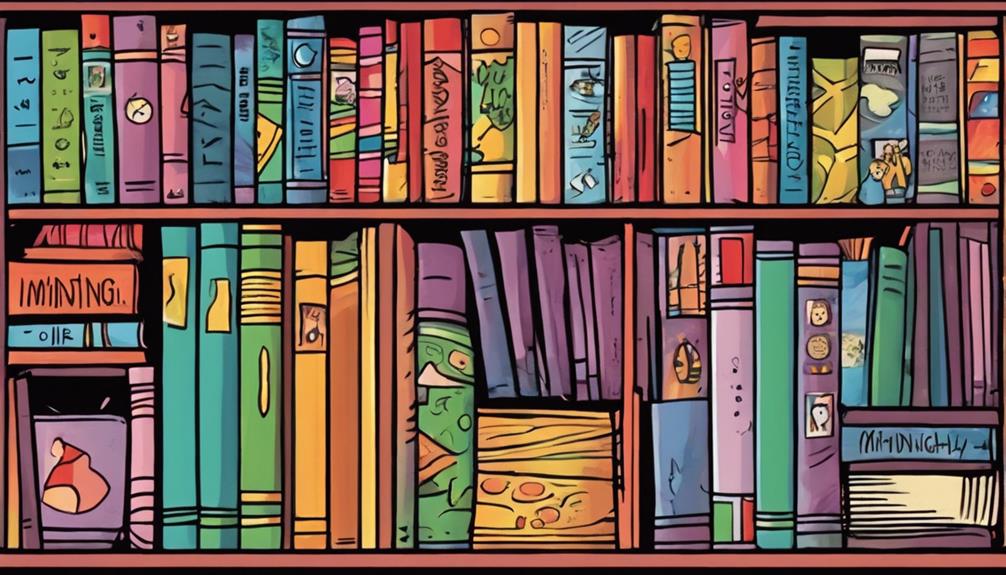As a child psychologist, I recommend five top grief-support books for children that effectively address various types of loss like death, separation, and illness. These books use age-appropriate language, gentle illustrations, and activities to promote emotional understanding and resilience. They validate kids’ feelings and encourage healthy coping. If you want to discover which titles best fit your child’s needs and learn helpful strategies, keep exploring these options further.
Key Takeaways
- They feature age-appropriate language and gentle illustrations to help children understand and process grief comfortably.
- The books validate a range of emotions, including sadness, anger, and guilt, promoting emotional resilience.
- Many include practical activities like drawing, storytelling, and breathing techniques to facilitate emotional expression.
- They address various types of loss, such as death, divorce, and illness, with inclusive and culturally sensitive content.
- Recommendations from child psychologists highlight their effectiveness in supporting healthy emotional development during grief.
The ABCs of Grief: a childrens grief book for all types of loss and grief
If you’re looking for a gentle, developmentally appropriate way to help a child understand and express their feelings of grief, “The ABCs of Grief” is an excellent choice. I appreciate how it covers all types of loss—death, illness, divorce, and more—making it versatile for many situations. The book uses simple language and engaging illustrations to help children identify emotions like anger, hope, and confusion. It validates their feelings, showing that experiencing a range of emotions is normal and healthy. This resource is especially helpful for parents, teachers, and therapists, providing a compassionate starting point for conversations about grief.
Best For: parents, teachers, and caregivers seeking a gentle, accessible resource to help children understand and process various types of grief and loss.
Pros:
- Validates a wide range of emotions, promoting emotional health and resilience
- Uses simple language and engaging illustrations suitable for young children
- Serves as a versatile tool for different loss situations, including death, illness, and divorce
Cons:
- May require adult guidance to fully support emotional discussions
- Some children might need additional resources for deeply complex grief experiences
- As a children’s book, it may not cover all individual cultural or personal contexts of grief
A Parents Guide to Managing Childhood Grief
*A Parent’s Guide to Managing Childhood Grief* stands out as an essential resource for anyone supporting children through loss, especially parents, relatives, and teachers. I found it incredibly helpful because it offers practical activities tailored for children aged 5-11, adaptable for younger kids and various settings. The guide explains how grief manifests at different developmental stages and provides simple, hands-on exercises like breathing techniques and arts and crafts. It emphasizes flexibility, allowing adults to choose activities suited to individual needs. Authored by a licensed mental health professional, it’s a trusted tool that fosters healthy emotional expression, resilience, and lasting memories during difficult times.
Best For: parents, teachers, and caregivers seeking practical, age-appropriate strategies to support children (ages 5-11) through grief and emotional challenges.
Pros:
- Offers a wide variety of easy-to-understand, adaptable activities suitable for diverse settings and individual needs.
- Provides professional guidance from a licensed mental health counselor, ensuring reliable and effective approaches.
- Emphasizes flexibility and creativity, encouraging positive emotional expression and resilience in children.
Cons:
- May require adult facilitation, which could be challenging for individuals with limited experience in grief support.
- Some activities might need additional materials or space not readily available in all settings.
- The book’s focus on children aged 5-11 may limit its direct relevance for older or very young children without adaptation.
Someone I Love Has Died: Grief Activities Book for Children
“Someone I Love Has Died” stands out as an ideal grief activities book for children who need gentle, creative ways to process their feelings. This compassionate resource provides comfort and validation while guiding kids through complex emotions with simple language and soothing illustrations. It encourages expression through drawing, writing, and storytelling, making grief more approachable. Designed to be used with a parent or caregiver, it fosters meaningful conversations and emotional safety. The soft, muted artwork creates a calming atmosphere, helping children feel understood and less alone. Overall, it’s a thoughtful, practical tool for managing loss with kindness and care.
Best For: children experiencing grief who need gentle guidance and creative outlets to process their emotions with the support of a caring adult.
Pros:
- Provides age-appropriate activities that facilitate emotional expression and remembrance
- Uses soothing illustrations and gentle language to create a comforting atmosphere
- Encourages meaningful conversations between children and caregivers about grief
Cons:
- Some activities may be less functional or less engaging in digital formats like Kindle
- May require adult guidance to fully benefit from the activities and discussions
- The simplicity of language might not address more complex or nuanced feelings for older children
Surviving the Loss of a Child: Support for Grieving Parents
When searching for support after losing a child, many parents find that grief‑support books like “Surviving the Loss of a Child” offer essential comfort and guidance. I’ve seen how personal stories within the book resonate deeply, helping parents feel less alone in their pain. It explains grief stages clearly, normalizing feelings like sadness, anger, and guilt, which provides reassurance. The practical advice and resources help parents navigate their journey toward healing. Although some may find the religious content less suited to their beliefs, the book’s compassionate tone and honest insights make it a valuable tool for many grieving families.
Best For: parents grieving the loss of a child seeking compassionate guidance, understanding of the grieving process, and practical resources for healing.
Pros:
- Offers heartfelt personal stories that provide comfort and validation for grieving parents
- Explains grief stages and emotional responses clearly, normalizing difficult feelings
- Includes practical advice and resource information to support healing efforts
Cons:
- Contains religious references that may not align with all individuals’ beliefs
- Some readers might find the tone too sensitive or emotionally intense based on personal preferences
- The focus on parental grief may limit its applicability for other types of loss or grief experiences
Ill Meet You in Your Dreams: Children’s Book about Separation, Loss, and Grief
If you’re looking for a gentle, comforting book to help a young child cope with separation or grief, *Ill Meet You in Your Dreams* is an excellent choice. This beautifully illustrated book uses a rhyming, poetic style to explore themes of love, separation, and loss in a tender way. It reassures children that even when apart, they can find comfort and adventure in their dreams, sharing quiet, loving moments. The colorful artwork adds to its appeal, making it engaging and soothing. Overall, it’s a heartfelt story that offers warmth and reassurance, helping children navigate difficult feelings with gentle understanding.
Best For: children experiencing separation anxiety, grief, or loss who need a gentle, reassuring story to help them understand and cope with their feelings.
Pros:
- Employs a tender, poetic rhyme that makes the story engaging and memorable for young readers
- Features colorful, beautiful illustrations that enhance the comforting tone of the book
- Provides a meaningful message of love, comfort, and adventure in dreams, helping children feel less alone during difficult times
Cons:
- Illustrations created using AI may lack the traditional artistic touch some readers prefer
- The poetic style might be challenging for very young children still developing reading skills
- As a specialized book, it may not appeal to children who are not experiencing separation or grief-related feelings
Factors to Consider When Choosing Grief‑Support Books for Children

When selecting grief-support books for children, I consider factors like age-appropriateness and emotional complexity to guarantee the story fits their understanding. I also look at how well the loss type is represented and whether the illustrations match the tone I want to convey. Additionally, cultural sensitivity is important to me to make sure the book resonates and feels inclusive for every child.
Age Appropriateness
Choosing a grief-support book that suits a child’s developmental stage is essential to guarantee the content resonates and provides comfort. When selecting a book, I pay close attention to whether the language and concepts are appropriate for the child’s age. Younger children need gentle explanations and simple visuals, while older kids can handle more complex emotions and themes. I also look for content that avoids overwhelming imagery or distressing details for younger children, ensuring the material feels safe and manageable. Additionally, I seek books with activities or prompts suited to the child’s cognitive and emotional capacity, helping them process grief effectively. Finally, I make sure the themes and illustrations align with the child’s maturity level, fostering understanding and reassurance during a difficult time.
Emotional Complexity Level
Selecting a grief-support book with the right emotional complexity is essential because it guarantees children can process their feelings without becoming overwhelmed or confused. It’s important to match the book’s emotional depth to the child’s developmental stage, ensuring they understand and relate to the content. A book with appropriate complexity validates a range of feelings like anger, sadness, and confusion, showing children that these emotions are normal and acceptable. If the book is too simple, it may not address the depth of their grief, while a too complex book can cause confusion or distress. Finding that balance helps children process their emotions healthily, fostering resilience and understanding during a difficult time. The right level of emotional complexity makes the grief journey more manageable and meaningful.
Loss Type Representation
Matching a grief-support book to a child’s specific type of loss guarantees they see their experiences reflected accurately. Whether a child is coping with death, divorce, or separation, the right book should depict their situation clearly and honestly. Look for titles that include diverse loss scenarios, helping children recognize that their feelings are valid regardless of the circumstances. It’s essential that the book addresses the emotional complexities unique to each loss, providing appropriate language and guidance. Additionally, choose books with inclusive and realistic portrayals to foster understanding and validation. The content and illustrations should be sensitive and tailored to the child’s particular loss, empowering them to process their grief effectively and feel less alone in their experience.
Illustration Style and Tone
When I look for grief-support books for children, I pay close attention to the illustration style and tone, because these elements can profoundly influence how a child feels while reading. I prefer gentle, warm, illustrations that are age-appropriate, creating a comforting atmosphere. Soft, muted, pastel colors often help evoke calm and safety, aiding emotional processing. Simple, expressive artwork that isn’t overwhelming can effectively complement the text without distracting from the message. The tone of the illustrations should match the book’s purpose—whether soothing, hopeful, or validating—to meet a child’s emotional needs. Consistent and cohesive visual styles also help children better understand and connect with the story, making complex feelings more approachable and less intimidating.
Cultural Sensitivity
Considering the importance of illustration style and tone, I also pay close attention to cultural sensitivity when choosing grief-support books for children. It’s essential that these books respect and accurately represent diverse cultural beliefs, practices, and mourning rituals. When a book reflects a child’s cultural background, it helps them see their own experiences validated, fostering inclusivity. Incorporating cultural symbols, language, and traditions makes the story more meaningful and relatable. On the other hand, overlooking cultural sensitivity can lead to feelings of misunderstanding or alienation, especially for children from different backgrounds. Many culturally sensitive grief books also guide caregivers on how to incorporate specific customs into the grieving process, which can provide comfort and clarity during difficult times.
Practical Engagement Activities
Have you ever noticed how incorporating practical activities in grief-support books can make a real difference for children? These activities, like drawing, storytelling, or craft projects, help children express their emotions and process grief in a tangible way. They’re designed to be age-appropriate and simple enough for kids to participate without needing artistic skills, encouraging engagement. Tasks such as creating Memory Jars or writing letters enable children to memorialize loved ones and articulate complex feelings. Practical activities also serve as therapeutic tools that can be used in therapy, classrooms, or at home, fostering resilience and emotional understanding. When choosing a book, look for those that include step-by-step guidance for caregivers or educators, ensuring activities promote healthy coping and emotional regulation effectively.
Frequently Asked Questions
How Can I Tell if My Child Is Ready to Read About Grief?
You can tell your child is ready to read about grief when they show curiosity or ask questions about loss and emotions. If they seem open to discussing feelings and handle other sensitive topics well, it’s a good sign. Watch for their emotional responses—if they become overwhelmed or withdrawn, it might be better to wait or choose gentler books. Trust your instincts and proceed gradually, always prioritizing your child’s comfort.
Are These Books Suitable for Children of All Ages?
These books are generally suitable for a wide age range, but I recommend checking each one’s age guidelines first. I personally find that some stories work better for older children who can understand complex emotions, while others are perfect for younger kids just starting to process grief. Always consider your child’s maturity and emotional readiness, and don’t hesitate to read the books yourself first to make sure they’re appropriate.
How Do I Introduce Grief Books to Hesitant or Upset Children?
Imagine gently opening a window on a cloudy day—I tell children that grief books are like that window, helping them see the light beyond their sadness. I start by sharing a story or picture they relate to, then gently introduce the book as a safe space for their feelings. I listen, reassure, and let them explore at their own pace, making sure they feel supported every step of the way.
Can These Books Help Children Cope With Complex or Traumatic Losses?
Yes, these books can really help children cope with complex or traumatic losses. I’ve seen how they create a safe space for kids to express feelings and understand their experiences. By sharing relatable stories, they validate children’s emotions and offer comfort. I believe that with gentle guidance, these books support healing and help children process their grief at their own pace, fostering resilience and hope.
What Signs Indicate a Child Needs Additional Professional Support?
When a child’s grief becomes a storm that doesn’t pass, it’s time to seek help. Signs like persistent sadness, withdrawal, difficulty sleeping, or regressive behaviors are warning flags. If they seem overwhelmed or their grief interferes with daily life, consider professional support. I know it’s tough, but guiding them toward a caring expert can help them navigate the turbulent waters of loss and find steady ground again.
Conclusion
Think of these books as gentle lanterns guiding children through a dark forest of grief. Each one lights the way, helping young hearts find their footing and see hope beyond the shadows. Choosing the right story is like handing them a trusted compass, leading them toward healing and understanding. With these tools, we can help children navigate their loss with courage, knowing they’re never truly alone in their journey.
















